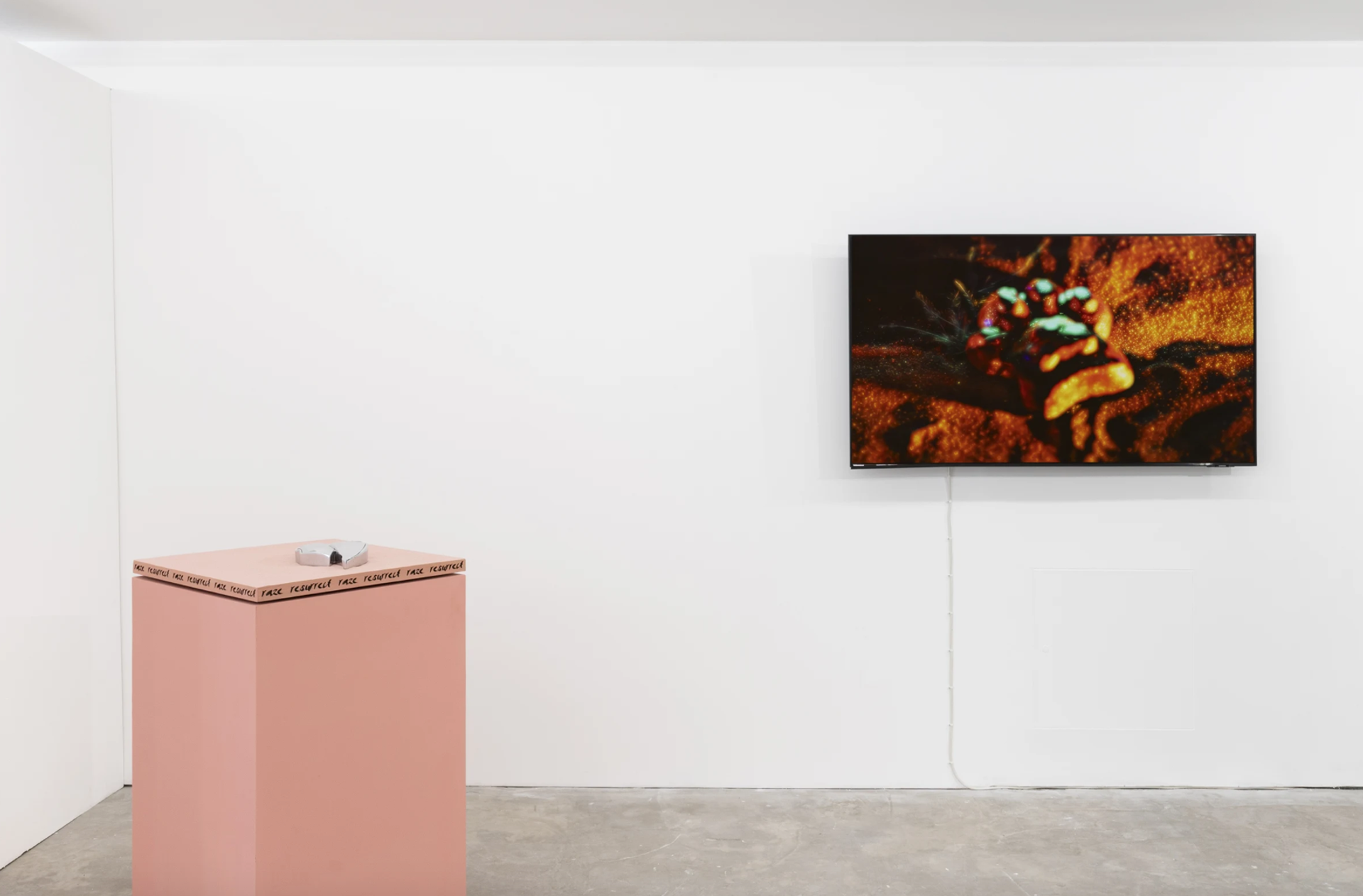With her latest show, the artist Jala Wahid wades into the charged, ongoing debate over the legacies of museums in the West, whose collections are largely built on objects taken from former colonies.
Pretend History (until 10 August), at the London commercial gallery Niru Ratnam, comprises a series of new sculptures and a film. It sees Wahid take aim at two museums in particular, the British Museum and the Louvre, whose digital archives and physical collections she relied on to source material for the show.
“I had an epiphany in the British Museum,” Wahid says. For research purposes, she was granted access to handle artefacts stored in the museum’s collection. Throughout her career, the artist has made reference to her Kurdish background. Accordingly, she chose objects within the museum’s collection that were taken by British forces from Mesopotamia. Some of Mesopotamia’s historic territory corresponds to modern-day Kurdistan, a disputed region in West Asia whose majority population are Kurdish people. It is not widely recognised as an independent state.
At the British Museum, Wahid was presented with artefacts including a baby rattle, a cat figurine and pair of sunglasses. She was drawn to imagine the personal narratives connected to them. “I wanted to touch upon the endeavour of finding oneself in ancient history,” Wahid says. “As an artist I immediately began to think about the person who would have sculpted these artefacts—the frustration and excitement they might have experienced whilst making, the formal questions they would have asked themselves when deciding colour, shape, material, and what their intentions were for creating these objects.”
In response, Wahid has created sculptures for the show that correspond to these artefact, but are resolutely contemporary in both their style, to present a “non-linearity of time”. A sculpture of a black cat is presented with a pair of silver dice tied around its neck; a figurine of a calf sits on a bright multi-coloured fur pillow, bringing them into the 21st century. Through this, Wahid hopes to vivify artefacts that were stolen from their original locations and are now displayed in a manner entirely divorced from their original context, or simply stored away from public view.

The exhibition’s film, I Love Ancient Baby, is another attempt to revive these objects, which once played functional roles within the societies they were created, such as promoting fertility and warding off illness. In the film, artefacts from the Louvre and British Museum are taken outside their glass vitrines and placed against colourful backgrounds, while soundtracked to throbbing dance music.
“I don’t believe that archaeology, which has such an intimate relationship to violence and colonialism, could ever be objective,” Wahid says. “We’re affronted with this image of the museum as a site of generosity and protection. But it’s a prison and crime scene. It establishes layers of removal and distance, from glass cabinets denying touch to artefacts displayed without proper context. I am interested in what a truly accessible ancient history could possibly look like.”
Wahid also draws links between the states of Britain and France, which assumed control of parts of Kurdistan following the fall of the Ottoman Empire, denying Kurdish statehood, while keeping the objects of its displaced people in their national museums. These treasures, she points out, could feasibly face restitution claims by an independent Kurdish state, as artefacts stolen from countries such as Nigeria and India increasingly are.
An accompanying exhibition text, written by Niru Ratnam’s eponymous founder, links the show closely to key arguments and figures within the debate over museum restitution. These include the academic Dan Hicks and his influential book The Brutish Museums (2020).
Wahid voices her own thoughts on the restitution debate: “Repatriation needs to extend to reparations. A lot more needs to happen. The idea of funding research in these states that have been colonised is a start but it’s about enabling histories that could have happened and asking how this violence is continually upheld. Asking how these objects would look if they hadn’t been divorced from the context they were made in.”










